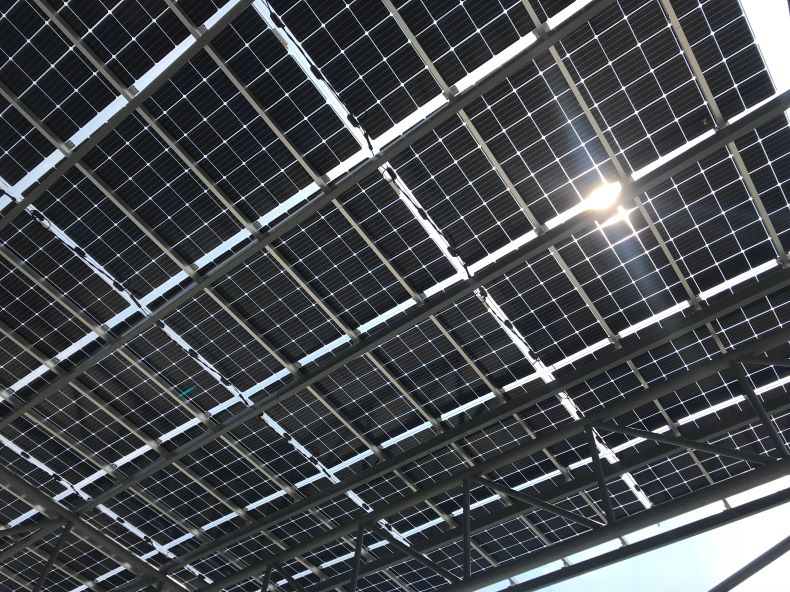Summary:
Two solar panel manufacturers, Risen Energy and Trina Solar have unveiled the first-of-their-kind 500 W, 72 solar PV solar panels, but are these solar panels going to be the new standard for the solar power industry?
Main Article:

There are two solar panel manufacturers, Risen Energy and Trina Solar, that have unveiled first-of-their kind 500 W, 72-cell PV solar modules.
How will the advent of 500 W PV solar modules change the solar power industry?
“For applications where you have a lot of area, particularly commercial and especially utility-scale, it’s really significant,” Cinnamon Energy Systems CEO Barry Cinnamon told pv magazine. “You could just use fewer modules – it reduces handling costs and overall balance-of-system costs go down.”
If there are less solar modules needed to reach the solar power capacity specifications of a solar panel installation project, that means overall project costs will go down as these solar modules become economically viable. A significant area that will see cost reduction will come from racking and trackers.
“It’s going to drive down the cost of racks and trackers per module,” said Matt Kesler, head of technology at OMCO Solar, an Arizona-based racking and fixed tilt tracking manufacturer. “It’ll reduce the cost per watt of installation labor. It’s also going to give a premium on racks and trackers that are designed for ergonomics. As these things get bigger they’re going to get heavier and wider. if there are features in the trackers and racks that assist in the placement of the modules, that’s going to have more value.”
The consensus among the installers interviewed by pv magazine was that the average module installed checks in at 380 W. This means that Trina and Risen’s solar panels deliver around 31% more solar power than the average installed solar panel. Cinnamon said that 10 years ago, the average solar module output was about 250 W.
As neat as that calculation is, these solar panels have a long way to go until they are solar power industry standards, let alone benchmarks for the average solar panel installation.
“It takes about five years for the industry to change all of its assembly equipment to a new size,” said Cinnamon. “It’s a lot of work to buy new equipment because often it can’t be reprogrammed … We’re talking three to five years to change out all of that equipment.”
“The most common sector is going to be C&I,” said Jock Patterson of Fronius USA, an inverter company. “I see these on rooftops where space is limited and they want higher efficiency modules. Large suppliers are going to feel the pressure to supply an inverter that’s 1,500 volts. Those who aren’t providing that are going to feel like they’re missing out on those larger rooftop projects.”
That change will not be solar power industry-wide. The residential solar energy market will see little direct impact as these modules become commercially available – as 72-cell solar panels have always been too large to be practical for home solar panel installations where roof space is limited, work spaces are angled and workers have to be able to carry the modules individually up ladders. Anything beyond the standard 1-meter by 1.6-meter 60-cell module is too cumbersome.
The hope for the residential solar installers that pv magazine spoke with was that the technologies used to get these solar modules to 500 W will eventually trickle down to their 60-cell brethren. In turn, this would mean that residential solar panel installations would be able to take up less roof area while providing more solar power, ultimately driving down balance-of-system costs.
Risen claims that it could easily reach 600 Wp of output with a 60-cell panel.
If you’re interested in going solar, see how much you can save by using the HahaSmart price checker tool and you can design your own solar-powered system using the design DIY tool.


Input your address to see if it is solar friendly and how much you can save with solar.
Great. Your address is perfect for solar. Solar incentive is still available. Select monthly utility cost and calculate the size of solar system you will need now.
| kw System size | years Payback period | Lifetime savings |
No money down, 100% finance is available.

|
|
Want to Get a Home Solar Panel Installation? Sign Up Here! |
Comments